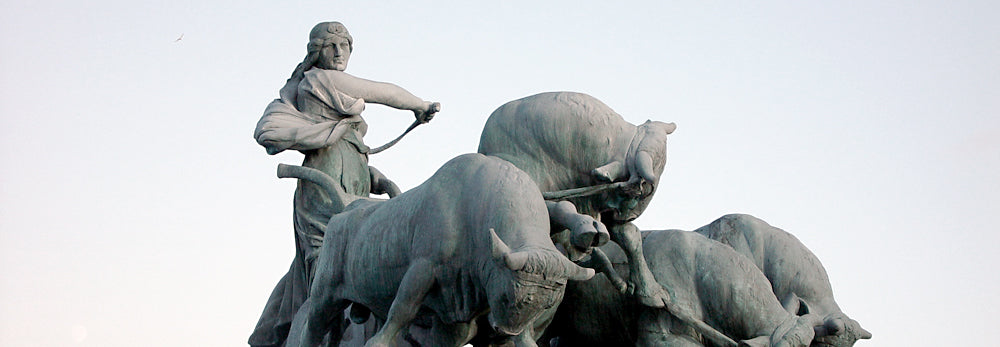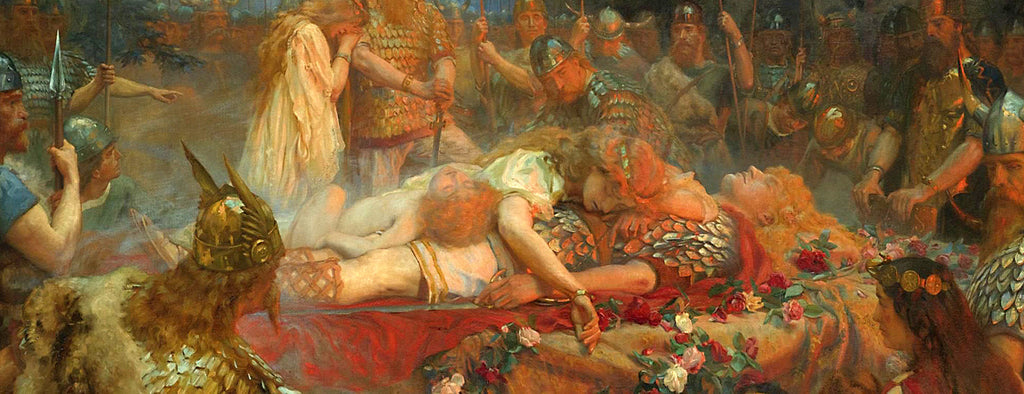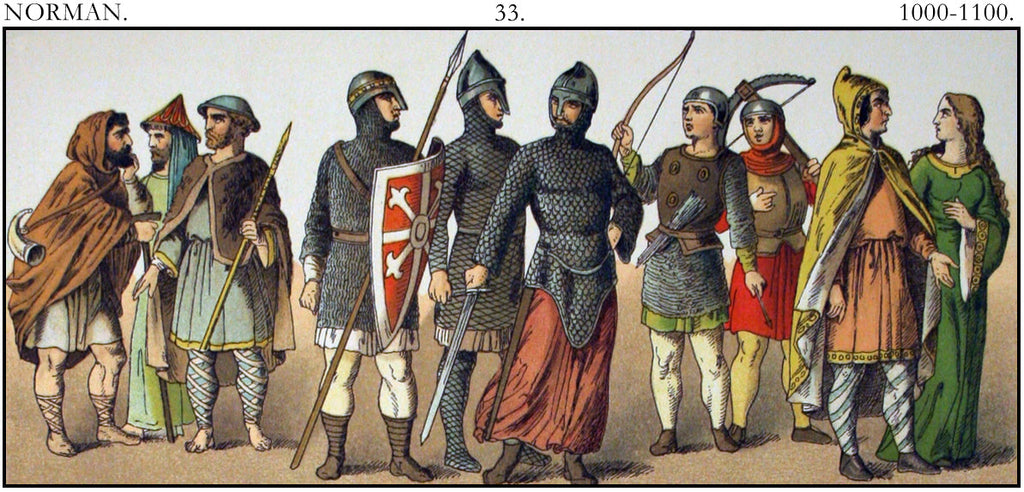
Viking Goddesses
Posted by Sons Of Vikings on
Thanks for visiting our blog! As a thank-you, enjoy 15% off your first order in our online Viking Shop with the discount code BLOG15. Frigg was the Queen of the Viking pantheon, the wife of Odin, and the mother of the beloved god, Baldr. However, Freyja – goddess of magic, war, erotic love, and treasure – was probably the more venerated and popular female deity in the Viking Age. Never far from the Viking’s mind was Rán, the goddess of the sea. Many stories of these goddesses come down to us through the Eddic poems, the sagas, and the works of medieval lore masters like Snorri Sturluson (1179-1241).Other goddesses have left us fewer stories but were still very important. There was...

Viking Chess
Posted by Sons Of Vikings on
Thanks for visiting our blog! As a thank-you, enjoy 15% off your first order in our online Viking Shop with the discount code BLOG15.Note: When you are done reading this article, check out our Viking chess (Hnefatafl) sets and Isle of Lewis chess sets for sale here. History of Hnefatafl (Tafl) ...and the Isle of Lewis Chess Set. Vikings loved to play games of strategy like dice games and various board games. Game boards and playing pieces carved from walrus tusks, bone, wood, stone, or imported glass have been found in many graves of high-status men and women throughout the Viking world. The famous “shield maiden’s grave” of the Birka Warrior was not only outfitted with an array of deadly weapons and war...

Romantic Love in the Viking Age
Posted by Sons Of Vikings on
In fact, Viking lore is full of love stories. As hard as their world was and as ruthless as they could sometimes be, they understood and valued this greatest human emotion.

Why They’re Called Vikings
Posted by Sons Of Vikings on
Víkingr and other forms of the word, such as víkingum or víkingar (plurals), appear as nouns describing Scandinavian seaborne raiders in the sagas, Eddic poetry, and runestones. Just a few examples of such Viking Age runestone inscriptions include ...

Viking Gods remembered in the Days of the Week
Posted by Sons Of Vikings on
Many people know that our names for the days of the week carry the memories of ancient gods. And while the Romans had their own official names for each day of the week, the gods of Norse mythology have a very strong presence in the day names we use today. For example, Thursday comes from Thursdaeg or Thorsdagr (Old Norse: Þórsdagr), which both mean "Thor's day".

Jörmungandr: The World-Coiling Midgard Serpent of Norse Mythology
Posted by Sons Of Vikings on
Jörmungandr is not the only world-coiling serpent across the thousands of years and hundreds of cultures that color the human imagination. In fact, the image of a tail-swallowing dragon can be found worldwide and throughout history. This symbol of the circular snake is called the ouroboros. The earliest known ouroboros depiction is from the grave of Pharaoh Tutankhamen (“King Tut”) from the 13th century B.C.

From Norsemen to Normans
Posted by Sons Of Vikings on
The land was closest to England and right along the main continental (Viking) raiding route south from Scandinavia. As a direct result, this land became known as Normandy. Medieval Latin documents referred to them as Nortmanni, which means "men of the North".

Viking Influences on Halloween
Posted by Sons Of Vikings on
Many people know that Halloween is rooted in the ancient Celtic holy day, Samhain. In the 18th and 19th centuries, Irish immigrants brought these traditions to America, where they developed into one of our most popular holidays. However, some of the best-known themes and elements in modern Halloween come from Viking lore, and not Celtic alone. This article will briefly look at some of these motifs and stories, exploring the Viking and/or Norse mythology influences on Halloween.

Giants: The Anti-Gods of Norse Mythology
Posted by Sons Of Vikings on
Thanks for visiting our blog! As a thank-you, enjoy 15% off your first order in our online Viking Shop with the discount code BLOG15.In Viking lore, the giants were the enemies of the gods. Though numerous movies and pop culture themes have made this divine enmity well-known, the giants themselves are widely misunderstood by many modern Viking enthusiasts. Growing up on stories like Jack and the Beanstalk and the like, we tend to think of giants as massive, brutish creatures whose steps shake the ground and bake people into pies, but are easily duped by a clever hero. But the giants of Norse lore are not “creatures” – they are supernatural beings, with much the same ancestry as the gods themselves. ...

Viking Lore: A Quick Intro to Norse Eddas and Sagas
Posted by Sons Of Vikings on
Thanks for visiting our blog! As a thank-you, enjoy 15% off your first order in our online Viking Shop with the discount code BLOG15.Consider how the bible, a collection of 66 different "books" (ancient written documents) offers a deeper understanding of the history relating to early Jews and Christians, those of us who are Scandinavian descendants or even anyone interested in Vikings and Norse mythology have asked, "What kind of ancient written documents do WE have?"The answer is the Icelandic writings known as the Sagas and Eddas. While some have turned portions of these documents into "scripture" (to support the worship of ancient Germanic spirits and gods), most people see these 12th and 13th century writings as the closest thing we...
